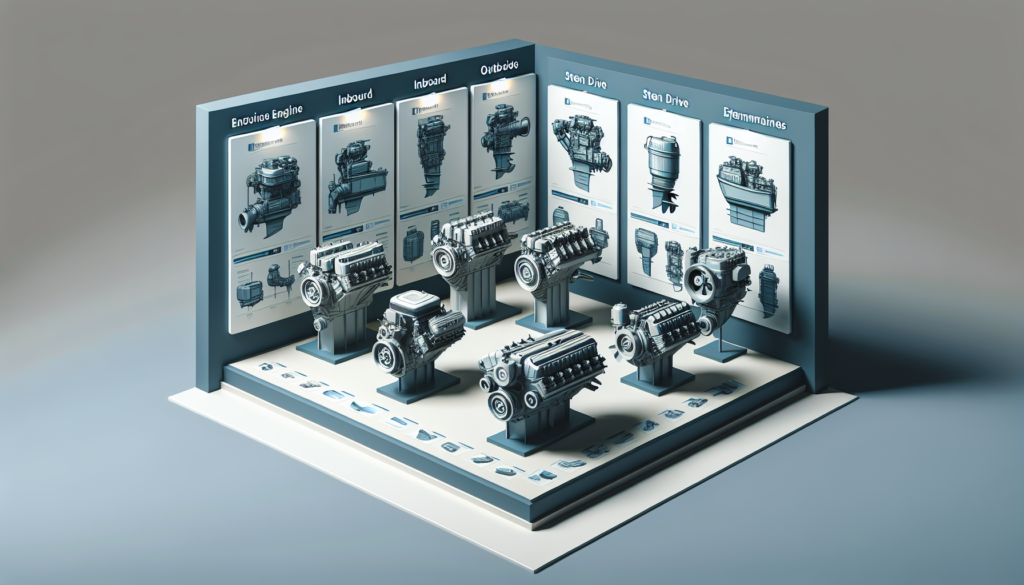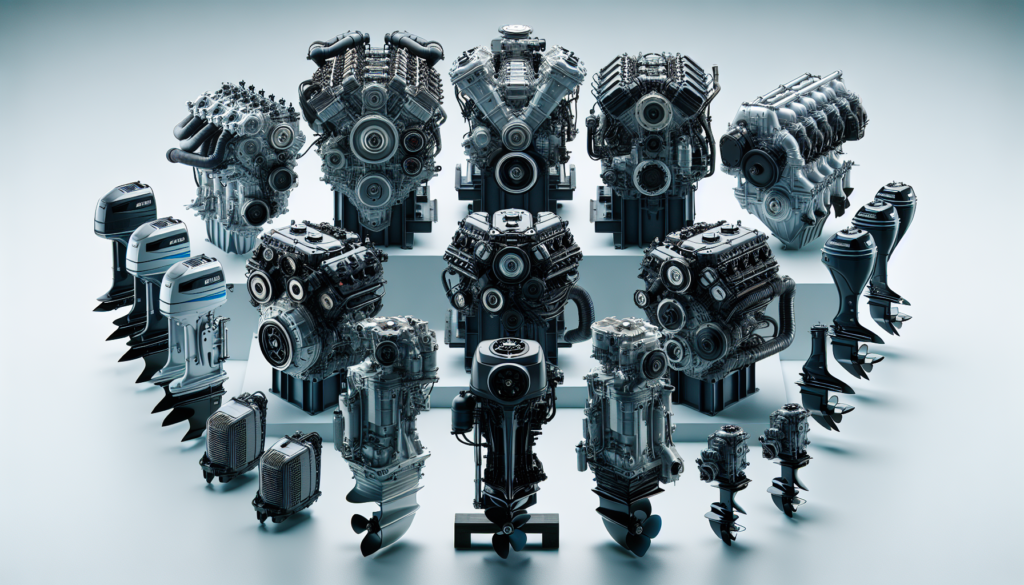So, you’re starting your boating journey, eh? Before you hoist your sail or rev your motor, there’s some groundwork to be done, specifically with regards to understanding boat engines. This guide is here to make sure you’re not lost at sea when it comes to the engine that makes your vessel go vroom. Let’s set the compass and navigate through the beginner’s guide to understanding different types of boat engines, as knowing your engine is equally as important as knowing your boat.

Understanding the Basics of Boat Engines
Boating is enjoyed by people all around the world. Whether you are seasoned sailor or a weekend hobbyist, knowing your way around the boat engine helps you to enjoy your time out on the water even more. Today, we’re going to delve into the nuts and bolts of boat engines.
Purpose of boat engines
The primary purpose of a boat engine, like any other engine, is to convert one form of energy into mechanical energy. In plain English, the fundamental task of your boat engine is to get you moving across the water. By harnessing the energy found in diesel, gasoline, or electricity, a boat engine powers the drivetrain that moves your vessel.
Key components of boat engines
While there are varieties of boat engines, most have some key components in common. These include the engine block, pistons, cylinders, and the crankshaft. Other important parts include the intake and exhaust valves, spark plugs, and the timing belt. Understanding these components and their role in the overall functioning of the engine is crucial to operating and maintaining your boat engine.
Comparing Gasoline and Diesel Boat Engines
When choosing a boat engine, one of the key decisions you’ll need to make is whether to opt for gasoline or diesel. Both have their unique characteristics and uses.
Differences in operation
Gasoline engines use a spark to ignite the fuel/air mixture, while diesel engines use compression to ignite the fuel. This means diesel engines usually have a higher torque, making them great for towing or carrying heavy loads.
Comparison of fuel efficiency
Diesel engines are typically more fuel-efficient than gasoline engines. This is because diesel fuel has a higher energy density than gasoline, meaning you get more energy per litre of fuel. If you’re planning long trips or use your boat a lot, fuel efficiency can be an important factor to consider.
Maintenance needs and costs
Generally speaking, diesel engines are more expensive to maintain than gasoline engines due to their complexity. However, they typically have a longer lifespan, which may offset the higher upfront maintenance costs.
Longevity and durability comparisons
When it comes to longevity and durability, diesel engines often come out on top. They are designed to withstand the pressures of higher compression, making them more robust and likely to last longer. On the contrary, gasoline engines are generally more lightweight and might be more susceptible to wear and tear.
Introduction to Inboard Engines
A type of marine propulsion system, let’s explore inboard engines further.
Definition of inboard engines
Broadly speaking, inboard engines are mounted inside the boat’s hull in the middle of the boat. The engine drives a shaft that passes through the bottom of the hull and connects to a propeller outside the boat.
Typical uses for inboard engines
Inboard engines are especially common on larger, more luxurious boats, such as yachts and cabin cruisers. These boats often require more power and precision in handling, which inboard engines can provide.
Advantages and disadvantages of inboard engines
The location of an inboard engine helps to balance the boat and keep the centre of gravity low. This results in better stability and handling. On the downside, inboard engines can be harder to access for maintenance and repair purposes and are generally more expensive upfront as well.

Understanding Outboard Engines
Outboard engines are a popular choice among leisure boaters. Let’s find out why.
What are outboard engines
An outboard engine is a self-contained unit that includes an engine, gearbox, and propeller. The unit is mounted on the outside of the boat, at the stern, hence the name ‘outboard’.
The types of boats that typically use outboard engines
Outboard engines are extremely versatile and hence can be found on a multitude of boats ranging from small fishing boats to larger pontoons and sailboats. They suit smaller boats best since they can be lifted out of the water when not in use, reducing wear and tear.
Benefits and drawbacks of outboard engines
Outboard engines are typically easier to maintain and service due to their accessibility. They also perform well in shallow water as the propeller can be easily lifted. On the flip side, these engines could potentially imbalance the boat since the weight is at the stern, and they may be louder because they’re not muffled by the boat’s hull.
The Intricacies of Sterndrive Engines
Also referred to as inboard/outboard engines or I/Os, sterndrive engines are a hybrid offering the best of both worlds.
Concept of sterndrive engines
A sterndrive engine combines elements of an inboard engine and an outboard engine. The engine is located inside the boat, just like an inboard engine. This drives a shaft that is attached to a lower unit at the back of the boat, similar to an outboard engine.
How sterndrive engines work
Sterndrive engines work by transferring power from the engine to the drive which lies outside the hull – this is the ‘outboard’ part. The part inside is similar to an inboard engine.
Pros and cons of sterndrive engines
Among the advantages are good maneuverability, efficient power transfer, and versatility as they can be used on many types of boats. The cons include complexity of design, which can raise repair and maintenance costs, and more challenging shallow water navigation.
Jet Engines and How they Differ
Jet engines in boats offer a completely different way of power transmission.
Definition of boat jet engines
The basic idea of a jet engine on a boat is to draw water in through an intake and then expel it out of the back of the boat at high pressure, thus creating thrust.
Major differences between jet engines and other boat engines
Unlike propulsion engines, jet engines have no external moving parts like propellers or driveshafts. The key difference between jet engines and other types of boat engines lies in the propulsion system.
Pros and cons of jet engines
Jet engines offer excellent acceleration and high top speed. They also allow for very shallow draft, meaning they’re good in shallow waters. On the negative side, they can be less fuel-efficient, tend to be noisy, and can be more expensive to purchase and operate.
Two-Stroke Versus Four-Stroke Engines
Two-stroke and four-stroke refer to how a gasoline engine completes a full power cycle.
Difference in operation between two-stroke and four-stroke engines
In a two-stroke engine, the entire engine firing process (valves open/close, fuel intake, ignition, and exhaust) happens in two movements of the piston. For a four-stroke engine, this process happens over four piston movements– intake, compression, combustion, and exhaust.
Fuel efficiency comparison
Four-stroke engines are generally more fuel-efficient than two-stroke engines, but they are also heavier due to the added components needed to complete four phases of combustion.
Differences in maintenance requirements
Two-stroke engines often require less maintenance because of their simpler design, but they can be harder on the environment due to incomplete fuel burning.
The Role of Electric Engines in Boats
An increasingly popular choice for boats, electric engines have several advantages.
How electric engines function
Electric boat engines run off electricity stored in batteries. The batteries power an electric motor which turns the propeller.
Environmental impacts of electric engines
Electric engines are quiet, clean, and emit no greenhouse gases. They are therefore considered more environmentally friendly than traditional boat engines.
Comparison with traditional boat engines
While electric engines are more eco-friendly, they presently lack the range and speed of gasoline or diesel engines. However, improvements in battery technology are narrowing this gap.
Understanding Hybrid Boat Engines
Hybrid boat technology is developing fast. Let’s take a look.
Explaining the concept of hybrid boat engines
A hybrid boat engine typically combines a diesel or gasoline engine with one or more electric motors. Power can be sourced either from the internal combustion engine, the electric motor, or both.
Advantages of hybrid boat engines
Benefits of hybrid boat engines include their ability to operate in a silent, zero-emissions mode using the electric motor and switch to the internal combustion engine for higher speeds.
Downsides of using hybrid boat engines
Challenges include the weight and cost of the additional batteries required, and the current limitations in electric range and charging times.
Engine Maintenance and Common Troubleshooting Tips
Regular maintenance and good repair skills are vital to extend your boat engine’s lifespan.
Key areas for regular maintenance of boat engines
Regular oil changes, spark plug replacement, and fuel system cleaning are some of the basic yet essential maintenance tasks that will keep your boat engine running smoothly.
Common issues with boat engines and how to fix them
Common boat engine issues include overheating, engine not starting, and loss of power. Many of these can be fixed by a diligent owner who’s willing to get their hands dirty.
When to reach out to a professional for boat engine problems
While many minor issues with boat engines can be fixed without professional help, some problems need a qualified mechanic. If your troubleshooting doesn’t resolve the issue or if you’re at all uncomfortable performing a repair, it’s always recommended to reach out to a professional.

